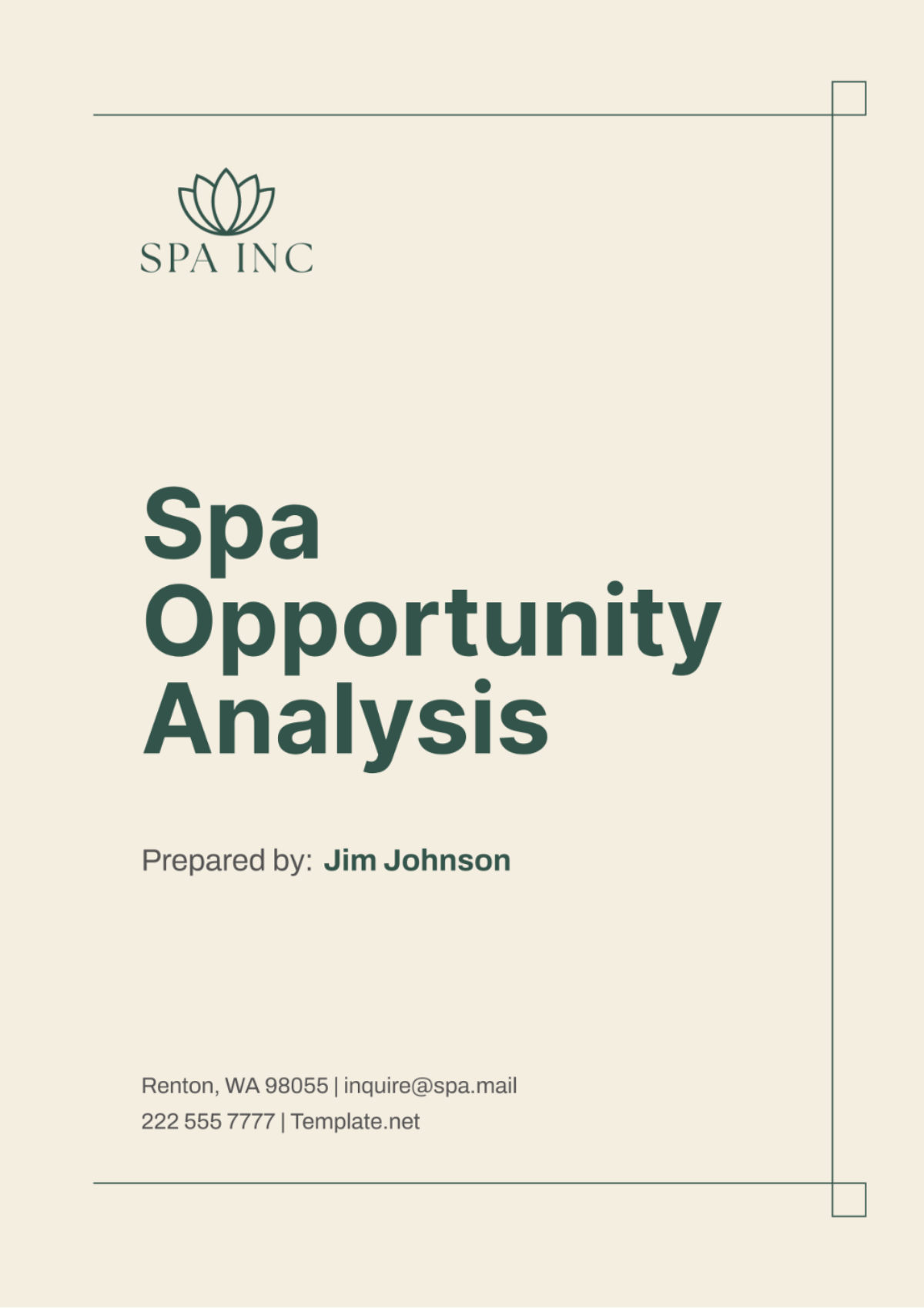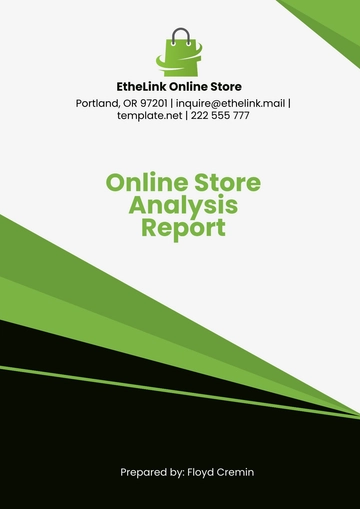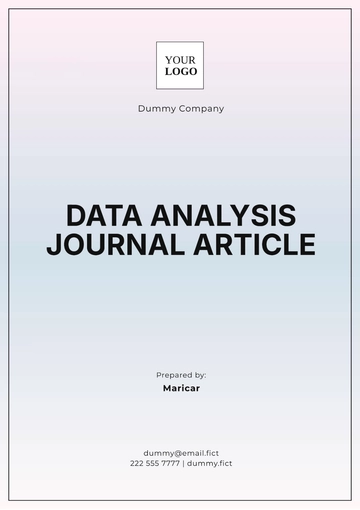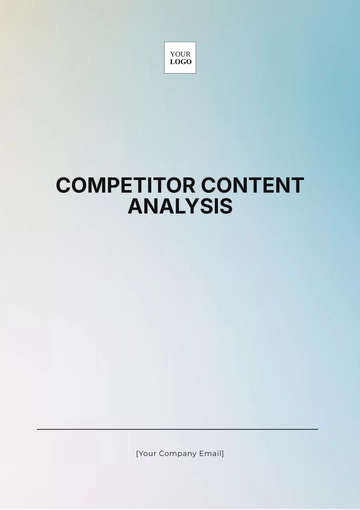Free Spa Opportunity Analysis

I. Executive Summary
A. Overview of the Spa Opportunity Analysis
The Spa Opportunity Analysis sets out to thoroughly evaluate the viability and potential for expansion of our spa business. This analysis seeks to achieve its objective by conducting an exhaustive investigation into various critical aspects. Firstly, it delves into the market dynamics to understand trends and consumer behaviors that shape the spa industry. Following this, it scrutinizes the efficiency of our operations to identify areas that can be optimized for better performance. Additionally, the analysis evaluates our current marketing strategies to propose improvements and innovations that could enhance our market reach and brand presence. Moreover, it includes detailed financial projections to provide a forecast of the business's potential earnings and expenses, thereby illuminating the financial trajectory we can expect.
The report also identifies and assesses the various risk factors that could pose challenges to our growth and stability. Taken together, these elements of the Spa Opportunity Analysis offer a comprehensive overview, yielding invaluable insights and well-founded recommendations. These insights are instrumental not only in seizing potential opportunities for growth but also in devising strategies to navigate and mitigate potential challenges, thereby ensuring a sustainable and prosperous future for our spa business.
B. Key Findings and Recommendations
Market demand for spa services is robust, driven by increasing awareness of wellness and self-care trends.
Location analysis indicates potential for expansion into high-traffic areas with affluent demographics.
Operational efficiencies can be improved through technology adoption and staff training programs.
Marketing efforts should focus on digital channels and personalized customer experiences.
Financial projections demonstrate strong potential for profitability, contingent on effective cost management and revenue growth strategies.
II. Introduction
A. Background of the Spa Business
Our spa business, known for its holistic approach to wellness and exceptional customer service, has been operating successfully for the past five years. With a range of services including massages, facials, body treatments, and wellness packages, we have built a loyal clientele and established a reputation for excellence in the local market.
B. Objectives of the Opportunity Analysis
Assess market opportunities for expansion and growth.
Evaluate operational effectiveness and identify areas for improvement.
Develop strategic marketing and sales initiatives to drive revenue growth.
Estimate financial projections and return on investment for potential expansion plans.
III. Market Analysis
A. Market Overview
The spa industry is experiencing steady growth globally, fueled by increasing consumer awareness of the importance of self-care and wellness. According to industry reports, the global spa market was valued at $[00] billion in [Year] and is projected to grow at a CAGR of [00]% over the forecast period.
B. Target Market Segmentation
Segment | Description | Percentage of Market |
|---|---|---|
Millennials | Young professionals seeking relaxation | [00]% |
Baby Boomers | Aging population focused on health and wellness | |
High-Income Individuals | Affluent clientele seeking luxury spa experiences |
C. Market Trends and Growth Opportunities
Rising demand for personalized spa experiences and wellness retreats.
Increasing popularity of eco-friendly and sustainable spa products and services.
Growth of medical spa services, including cosmetic procedures and anti-aging treatments.
D. Competitive Analysis
Our primary competitors include other local spas and wellness centers, as well as luxury hotels offering spa services. Analysis reveals strengths in our diverse service offerings and customer loyalty programs. However, opportunities exist to differentiate through innovative treatments and enhanced customer experiences.
IV. Location Analysis
A. Evaluation of Current Location
Our current location in the city center has served us well, providing visibility and accessibility to our target market. However, limited parking and space constraints hinder potential for expansion. Customer feedback suggests that the central location is convenient for urban dwellers but may deter suburban clients due to traffic congestion during peak hours. Exploring options to alleviate parking challenges and optimize space utilization could enhance the current location's viability for future growth.
B. Consideration of Potential New Locations
Exploring opportunities in high-traffic areas with affluent demographics, such as shopping malls or upscale residential complexes, could enhance our market reach and revenue potential. Preliminary research indicates that areas with high concentrations of office buildings and corporate headquarters present opportunities to capture business from busy professionals seeking relaxation during lunch breaks or after work hours. Evaluating lease terms, foot traffic patterns, and competitor presence will be crucial in selecting the most suitable new location for our spa.
C. Analysis of Location Factors
Factors such as foot traffic, accessibility, proximity to target demographics, and competition will be considered in the selection of a new location. Utilizing geographic information systems (GIS) technology and demographic data analysis tools will enable us to identify optimal locations with a high density of our target market and minimal competition. Additionally, conducting site visits and market surveys will provide valuable insights into consumer preferences and behavior in potential new locations.
V. Services and Products Analysis
A. Overview of Spa Services Offered
Our spa offers a wide range of services including massages, facials, body treatments, manicures, pedicures, and wellness packages tailored to individual needs. Each service is designed to deliver a holistic wellness experience, combining therapeutic techniques with luxurious amenities to rejuvenate the mind, body, and spirit.
B. Analysis of Service and Product Mix
Service/Product | Revenue Contribution (%) |
|---|---|
Massages | [00] |
Facials | |
Body Treatments | |
Manicures/Pedicures | |
Wellness Packages |
The revenue contribution analysis reveals that massages are the highest revenue-generating service, followed by facials and body treatments. Manicures/pedicures and wellness packages also contribute significantly to overall revenue, albeit to a lesser extent.
C. Assessment of Service Differentiation
While our services are competitive in terms of quality and variety, differentiation through unique offerings and specialized treatments can further enhance our competitive advantage. Introducing signature treatments inspired by local traditions or incorporating cutting-edge wellness technologies can differentiate our spa from competitors and attract discerning clientele seeking novel experiences.
VI. Operational Analysis
A. Overview of Current Operations
Operational efficiency is a key determinant of profitability in the spa industry. Analysis of current operations reveals opportunities to streamline processes and optimize resource utilization. By leveraging technology solutions such as spa management software and automated scheduling systems, we can improve efficiency in appointment booking, staff management, and inventory control.
B. Assessment of Operational Efficiency
Area of Operation | Opportunities for Improvement |
|---|---|
Appointment Scheduling | Implementation of online booking system to reduce manual scheduling errors and streamline appointment management. |
Staff Training | Development of comprehensive training programs to enhance technical skills and customer service capabilities, ensuring consistent service quality across all staff members. |
Inventory Management | Utilization of inventory tracking software to monitor product usage, minimize waste, and optimize inventory levels based on demand fluctuations. |
Enhancing operational efficiency in these areas will not only improve customer satisfaction but also contribute to cost savings and revenue growth.
C. Identification of Operational Challenges
Challenges such as staff turnover, inconsistent service quality, and maintenance issues require proactive management to ensure smooth operations. Implementing employee retention strategies, conducting regular performance evaluations, and investing in facility maintenance will address these challenges and uphold our commitment to delivering exceptional spa experiences.
VII. Marketing and Sales Strategy
A. Overview of Current Marketing Efforts
Our current marketing efforts primarily consist of social media promotions, email newsletters, and partnership collaborations with local businesses. While these channels have generated some traction, there is room for improvement in terms of targeting specific customer segments and measuring the effectiveness of our campaigns.
B. Analysis of Marketing Channels and Effectiveness
Marketing Channel | Effectiveness | Opportunities for Improvement |
|---|---|---|
Social Media | Moderate | Enhanced targeting through demographic analysis and engagement tracking. |
Email Newsletters | Low | Revamping content strategy and implementing personalized email campaigns. |
Partnerships | High | Expanding partnerships with complementary businesses and tracking referral conversions. |
Identifying the most effective marketing channels and optimizing our approach will maximize return on investment and drive customer acquisition and retention.
C. Development of Marketing and Sales Strategy
Based on our analysis, we will develop a comprehensive marketing and sales strategy that integrates targeted digital marketing campaigns, referral programs, and promotional events. Leveraging customer data analytics and customer relationship management (CRM) software will enable us to personalize marketing communications and nurture long-term customer relationships.
D. Budget Allocation for Marketing Activities
Marketing Activity | Budget Allocation (%) |
|---|---|
Digital Advertising | [00] |
Email Marketing | |
Events and Promotions | |
Partnerships and Collaborations |
Strategic allocation of our marketing budget will ensure optimal resource allocation and maximize the impact of our marketing initiatives.
VIII. Regulatory and Legal Considerations
A. Overview of Spa Regulations and Licensing Requirements
The spa industry is subject to various regulations and licensing requirements to ensure compliance with health, safety, and sanitation standards. Understanding and adhering to these regulations is essential to operating a legal and reputable spa business.
B. Compliance Assessment
Conducting a comprehensive compliance assessment will involve reviewing local, state, and federal regulations governing spa operations, including licensing requirements for staff, sanitation standards for facilities, and guidelines for handling and disposal of chemicals and waste.
C. Identification of Legal Risks and Mitigation Strategies
Potential legal risks in the spa industry may include liability issues arising from accidents or injuries during treatments, disputes over contracts or agreements, and violations of consumer protection laws. Implementing risk management protocols, securing appropriate insurance coverage, and seeking legal counsel when necessary will help mitigate these risks and protect the interests of our business.
IX. Financial Analysis
A. Revenue Projection
Based on historical sales data and market trends, we project a conservative annual revenue growth rate of [00]% over the next three years. Revenue projections are segmented by service category and customer segment to provide a detailed forecast of income streams.
B. Cost Analysis
Cost analysis encompasses both fixed and variable expenses, including personnel costs, facility maintenance, supplies and inventory, marketing expenses, and overhead costs. By identifying cost-saving opportunities and implementing efficient resource allocation strategies, we aim to optimize our cost structure and improve profitability.
C. Profitability Forecast
Year | Revenue (USD) | Expenses (USD) | Profit (USD) | Profit Margin (%) |
|---|---|---|---|---|
Year 1 | [000,000] | [000,000] | [000,000] | [00] |
Year 2 | ||||
Year 3 |
Maintaining a healthy profit margin is crucial for sustaining business growth and reinvesting in future expansion initiatives.
D. Break-Even Analysis
Break-even analysis calculates the point at which total revenue equals total costs, indicating the minimum level of sales required to cover operating expenses. By understanding our break-even point, we can make informed decisions about pricing strategies, cost management, and revenue targets.
E. Return on Investment (ROI) Calculation
ROI calculation measures the profitability of our investment in spa expansion or renovation projects. By comparing the expected return from the investment to the initial cost, we can assess the viability and financial feasibility of potential projects and prioritize those with the highest ROI.
X. Risk Analysis
A. Identification of Potential Risks
Potential risks in the spa industry include economic downturns, fluctuations in consumer demand, competitive pressures, regulatory changes, and natural disasters. Conducting a thorough risk analysis will involve identifying and assessing the likelihood and impact of these risks on our business operations.
B. Assessment of Risk Severity and Probability
Each identified risk will be evaluated based on its severity and probability of occurrence, using qualitative and quantitative analysis techniques. Risks with high severity and high probability will be prioritized for mitigation efforts, while risks with low severity and low probability may be monitored or accepted without additional intervention.
C. Development of Risk Mitigation Strategies
Risk mitigation strategies may include implementing contingency plans, diversifying revenue streams, securing insurance coverage, establishing emergency funds, and strengthening supplier relationships. By proactively addressing potential risks, we can minimize their impact on our business continuity and protect our long-term sustainability.
XI. Conclusion
A. Summary of Key Findings
The Spa Opportunity Analysis has yielded an extensive and informative array of insights that cover several crucial aspects of the business environment. Specifically, the analysis has shed light on various market opportunities that can be leveraged to enhance the spa's competitive position. Additionally, it has highlighted ways to achieve operational efficiencies, which can streamline processes and reduce costs. The detailed findings also encompass effective marketing strategies that can be employed to attract and retain customers.
Furthermore, the financial projections included in the report offer a comprehensive look at potential revenue streams, expenses, and overall profitability. It also identifies risk factors that must be carefully managed to ensure long-term success. One of the pivotal conclusions drawn from the analysis is that there is substantial potential for growth and profitability within the spa industry. However, realizing this potential is heavily dependent on meticulous strategic planning and adept execution of business strategies.
B. Recommendations for Strategic Action
Expand into high-traffic locations with affluent demographics to capture new market segments.
Enhance operational efficiency through technology adoption and staff training programs.
Implement targeted marketing campaigns and sales promotions to drive customer acquisition and retention.
Monitor regulatory changes and market trends closely to adapt to evolving industry dynamics.
- 100% Customizable, free editor
- Access 1 Million+ Templates, photo’s & graphics
- Download or share as a template
- Click and replace photos, graphics, text, backgrounds
- Resize, crop, AI write & more
- Access advanced editor
Discover the ultimate tool for spa entrepreneurs – the Spa Opportunity Analysis Template from Template.net! This editable and customizable template empowers you to conduct in-depth market analysis, operational assessments, and financial projections effortlessly. With its intuitive AI Editor Tool, crafting strategic business plans has never been easier. Transform your spa business with precision and ease.





























